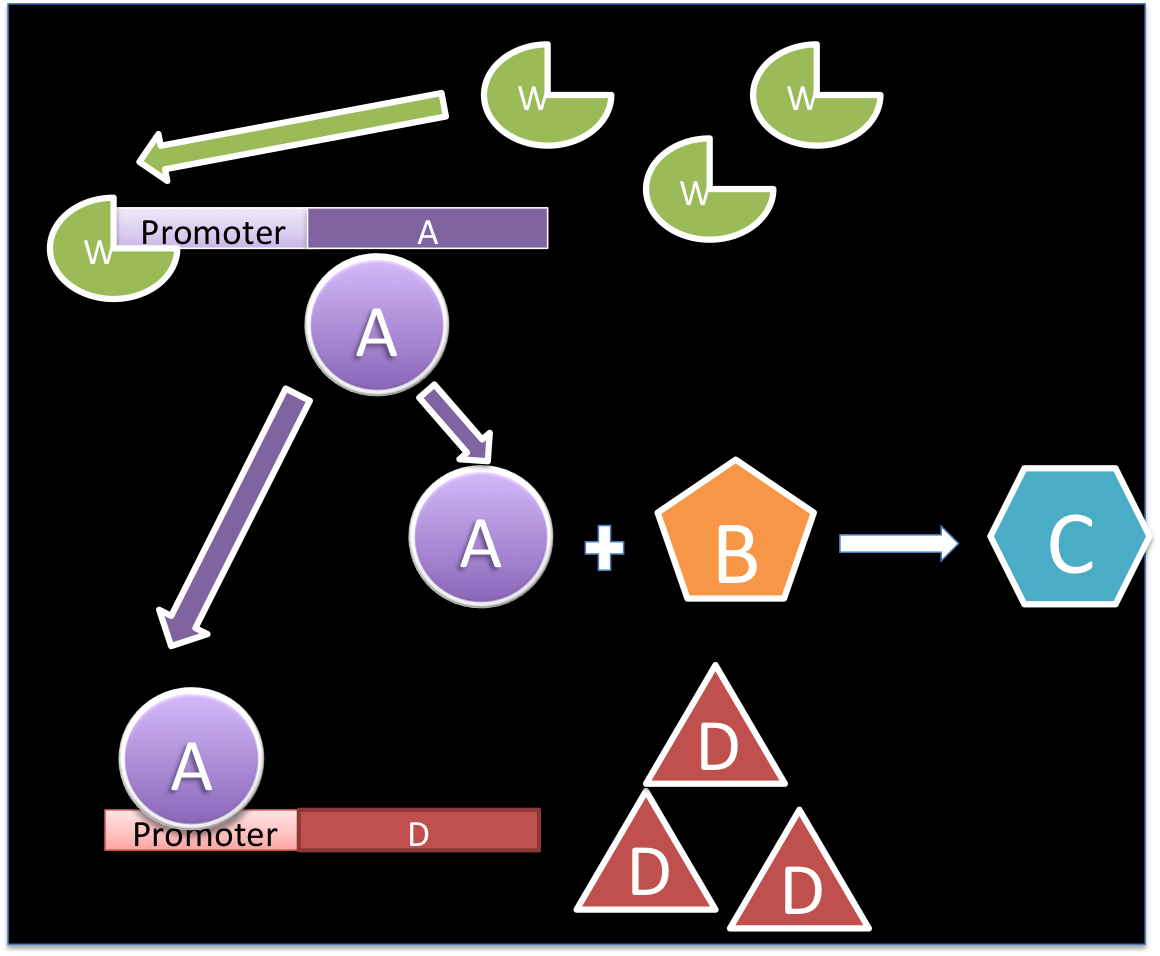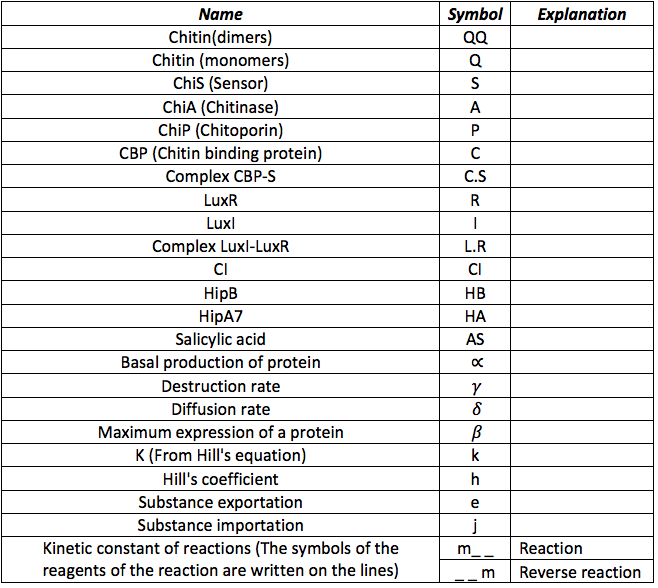Team:Colombia/Modeling/Diff
From 2012.igem.org
Team Colombia @ 2012 iGEM
Template:Https://2012.igem.org/User:Tabima
Differential equations
Before doing experiments with our bacteria modified and the plants, we can check if our design works by doing a mathematical model of it. Writing equations that define the system proposed and seeing their results will tell us if our design will work correctly or if we need to change something.
The first set of equations written are the differential equations. This type of mathematical model is named deterministic, because it will give a specific behaviour of the molecules in the time, without taking into account the probabilities involved in each of the events.
When we want to write the differential equations that represent the change in time of the molecules, the first thing to do is to understand all the processes that occur with these molecules of interest. Once al the processes are understood, an equation for each of the molecules is done, based on a basic mass balance.
Acumulation= Input+ Generation-Output-Consumption
In a biological system, the accumulation is the change in time, the input and output are related with the processes of exportation and importation of the molecule in the cell, the generation is related to the production by a gene or by a chemical reaction, and the consumption is related to the chemical reactions too. All these terms depend on the kinetics of the reactions it could be a simple multiplication or a complex kinetic like Hill.
To understand all of this better here is a brief example:
Example:
The molecule W promotes the production of A, which is used in a reaction with B for producing C and for the promotion of D.
Based on the material balance we can see that there is not exportation or importation hence there is no input or output term. The generation term is the production by the gene promoted by W, this generation behaves with a Hill kinetic:
The consumption term is divided in two: first the reaction with B, that can be expressed as a first order reaction with a kinetic constant m and the promotion of the protein D that has a Hill kinetic:
Writing all the equation together:
Like we just did, all the equations for the molecules are written, once the parameters are known, we can solve the system with the help of specialized software like MathLab. This software allows us to solve the differential equations with a Runge Kutta or with one of its tools like ODE45. It also and graphs the behaviour trough the time of every protein.
Our differential equations
- RUST!!!
We have seen how differential equations are made, now it is time to tell you how we made our differential equations. But before describing the equations it is necessary to know all the symbols that from now on will be use in the documents and the simulation. The following table contains all the substances involved in the processes and the constants required for the simulation of them.
CBP: The Chitin binding protein participates in two major processes. First it binds to the sensor and then, when the chitin is in the cell the CBP binds to it.
This set of equations involves de change of CBS free in the cell and the change of the complex C.S. With the production, the destruction rate and the reactions describe above the equations are:
ChiP: The chitioporin is the one that allows the entrance of the chitin monomers into the cell. Its production is regulated by the sensor (S), this regulation is expressed as a hill equation. The differential expression also includes the basal production and the rate of destruction; it is assumed that all the chitoporin produced goes to the membrane.
ChiA : chitinase The chitinase inside the cell depends of its basal production and the induction made by the sensor protein (S). The exportation of this enzyme is also involved in the equation.
The chitinase outside the cell depends of the rate of exportation of the chitinase inside, the diffusion in the environment and the reaction with the dimers of chitin.
Chitin: This equation measures the monomers of chitin inside the cell. This depends of a function of importation that depends on the quantity of chitoporins and the creation of chitin monomers outside the cell. This monomer is consumed in the reaction made with the complex C.S.
Sensor: This protein is one of the most important in the detection system, its function is to activate the promoters of P,A and I. Once the chitin enters to the cell S frees from the complex C.S and starts activating promoters.
 "
"




